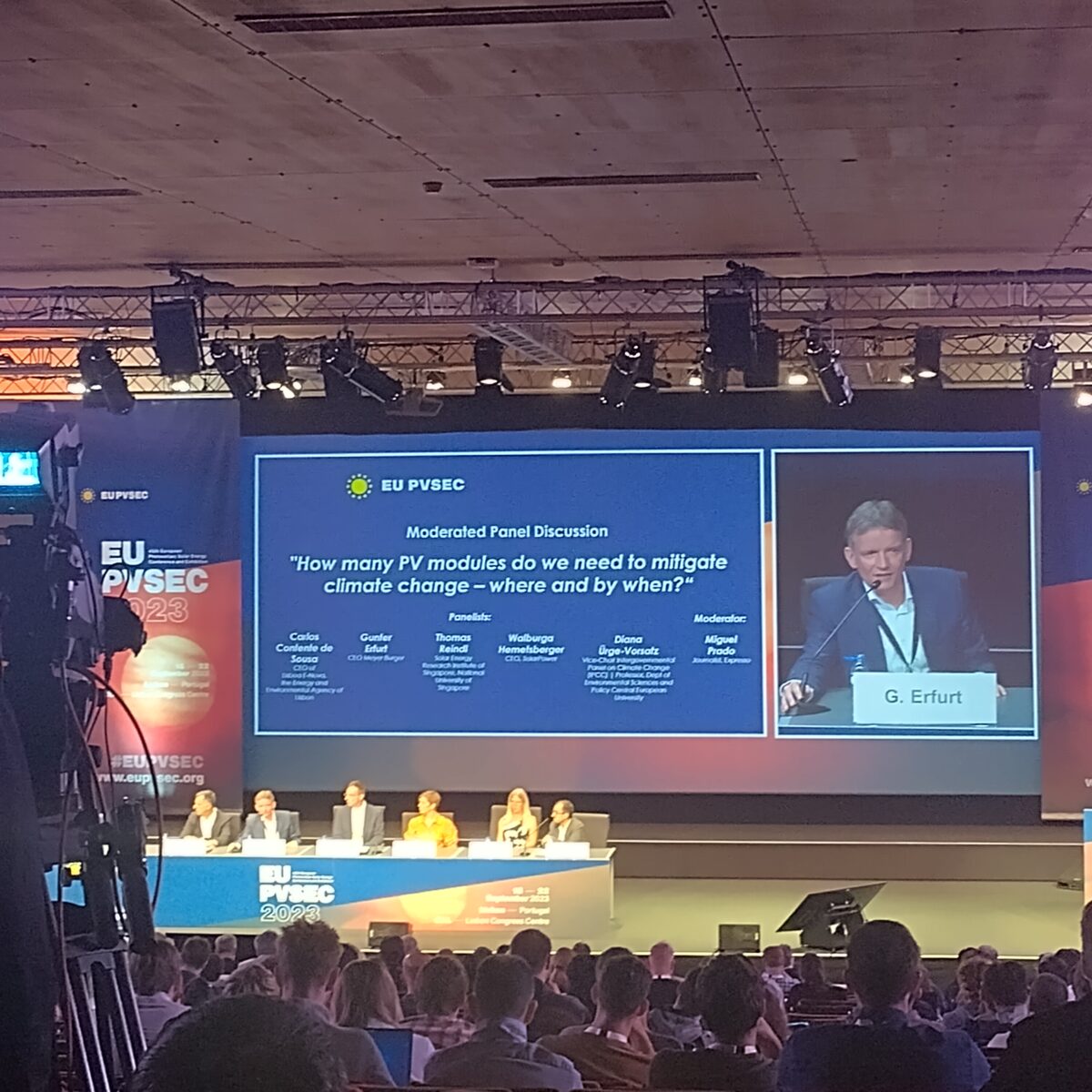Now in its 40th year, EUPVSEC kicked off in Lisbon this morning with an opening session that shows a European solar industry that appears confident of a comeback, despite recent challenges.
The event this year is already far larger than any going back as far as 2018, and has a much bigger industrial presence than previous years, which have been dominated by Europe’s PV research institutes and universities, with only a few equipment suppliers making the journey. The return of industry players was underlined from the start, with the awarding of the Becquerel Prize to longtime PV industry leader and CEO of Meyer Burger, Gunter Erfurt.
Accepting the prize earlier today, Erfurt spoke of the need for an industry-wide change in attitude on several fronts including policies to compete with lower-priced imports making their way into Europe, and the handling of intellectual property. On the imports side, he called for incentives on the buyer side for use of European made products, and stressed that globally, the solar industry must change its attitude to intellectual property to one that values innovation and the investment that comes with it, and accepts that making or buying products that copy another’s work are not an acceptable strategy.
Nevertheless, he stated confidently that Europe can produce solar modules for the rooftop and utility-scale markets, and achieve a levelized cost of energy very close to products imported from any region.
Policy challenges
Discussions in the opening session carried on with this air of optimism, while also recognizing that solar faces big challenges both in Europe and globally. Speaking in a panel discussion, SolarPower Europe CEO Walburga Hemetsberger stated that European PV is on a good path, with continent-wide PV installations expected to reach eight terawatts by 2050. “We see growth, but we cannot be complacement” she told the audience in Lisbon.
Later, the difficult situation faced by European PV manufacturers was laid out in a presentation by the European Solar Manufacturing Council’s Johan Lindahl. He warned that average capacity utilization for factories in Europe has fallen to 35%, with some manufacturers sitting on inventories now too expensive to be sold – and the ESMC is calling for support from the EU, possibly in the form of a program to buy out these inventories and donate the modules to reconstruction efforts in Ukraine. “To be an EU manufacturer equals a major structural disadvantage,” Lindahl told the crowd in the first session after lunch today.
And the wave of new manufacturing facilities currently under construction in the United States is also being discussed as further impetus for the EU to take action in supporting a European industry: “The Inflation Reduction Act is wake up call for Europe,” said Hemetsberger. “All regions want the PV technology of the future, and Europe must get into that race.”
Efficiency and integration
Much of the talk this morning has focused on the need for a policy overhaul to support solar at EU and state level. But EUPVSEC is traditionally a place where the latest PV technologies making their way out of Europe’s top R&D labs is showcased. And this year should be no different.
Talk of new applications and increased learnings on floating PV and agrivoltaics are emerging already as key themes: Also joining this morning’s panel discussion, Solar Energy Research Institute of Singapore’s Thomas Reindl stated that both floating PV (including offshore) and agrivoltaics will be key enablers in keeping solar installations growing, as well as space for building-integrated PV, which has so far seemed more difficult to manufacture, but no less important.
The opening panel discussion also noted that European research institute’s have led the solar industry in achieving close to a 0.5% per year increase in module efficiency for more than 20 years, and maintaining, even improving on this will be a key theme for week-long conference. “Bigger leaps in technology are ahead of us,” said Reindl. “Every additional kilowatt-hour we can generate from the same space is precious.”
This content is protected by copyright and may not be reused. If you want to cooperate with us and would like to reuse some of our content, please contact: editors@pv-magazine.com.




2 comments
By submitting this form you agree to pv magazine using your data for the purposes of publishing your comment.
Your personal data will only be disclosed or otherwise transmitted to third parties for the purposes of spam filtering or if this is necessary for technical maintenance of the website. Any other transfer to third parties will not take place unless this is justified on the basis of applicable data protection regulations or if pv magazine is legally obliged to do so.
You may revoke this consent at any time with effect for the future, in which case your personal data will be deleted immediately. Otherwise, your data will be deleted if pv magazine has processed your request or the purpose of data storage is fulfilled.
Further information on data privacy can be found in our Data Protection Policy.